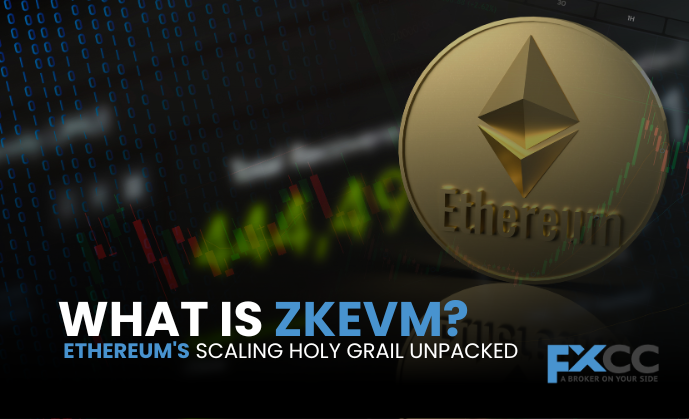Ethereum, the blockchain platform that powers everything from digital art to complex financial applications, is incredibly popular. But like any popular system, it has its challenges. Imagine a super-popular highway: the more cars that try to use it, the slower traffic gets, and the higher the toll becomes. This is similar to Ethereum’s main network, where high demand leads to slower transaction speeds and expensive fees, known as “gas.” This can make using Ethereum-based apps less smooth and more costly.
To fix this, the blockchain world has been developing “Layer 2” solutions. Think of these as new, faster lanes or even entirely new highways built to connect back to the main one. These Layer 2 solutions help Ethereum handle more traffic without getting jammed. Among the most promising solutions for tackling Ethereum’s scalability are “rollups.”

How Rollups Help Ethereum Scale
These clever systems operate by gathering a massive number of transactions—potentially hundreds or even thousands—and processing them away from the congested main Ethereum blockchain. Instead of sending every single transaction to Ethereum, they bundle them up into one neat package. Then, they send a tiny, compressed summary of all those transactions back to the main Ethereum chain. This is like sending a single, summarized report to headquarters instead of hundreds of individual receipts. This method greatly reduces the amount of work Ethereum’s main network has to do, making transactions faster and cheaper.
When it comes to rollups, there are two primary categories: Optimistic Rollups and Zero-Knowledge (ZK) Rollups. Optimistic rollups work by assuming that all the bundled transactions are valid. They then allow a short window of time (a “challenge period”) during which anyone can step forward and prove if a transaction was actually fraudulent. If fraud is found, the transaction is reversed.
ZK-rollups, on the other hand, use a different, more powerful method. They use advanced cryptography to prove that all the transactions in a bundle are valid before they are sent to the Ethereum main chain. There’s no waiting period or assumption of honesty; the validity is mathematically proven from the start. This is where the “zero-knowledge” part comes into play.
The Magic of Zero-Knowledge Proofs
So, what exactly is a zero-knowledge proof? It’s a clever way to convince someone that something is true without revealing any specific details about how you know it or what that “something” is. Imagine you want to prove that you are old enough to buy something, but you don’t want to show your actual ID (which contains your name, address, etc.). A zero-knowledge proof would be like having a special scanner that just lights up green if you meet the age requirement, without showing any other personal information.
For ZK-rollups, this means they can verify a large batch of transactions and then create a tiny, cryptographic “proof” that all those transactions are absolutely valid. A concise proof of valid off-chain transactions is then sent to the Ethereum mainnet. Because the proof is mathematically sound and guaranteed to be correct, Ethereum doesn’t need to re-check or re-process each individual transaction. This makes ZK-rollups incredibly secure and efficient. Once that proof is on Ethereum, the transactions are considered finalized almost instantly, unlike optimistic roll ups that have a delay.
Introducing zkEVM: The Game Changer
This leads us to one of the most exciting developments in the Ethereum scaling landscape: the “zkEVM.” The “EVM” stands for Ethereum Virtual Machine. This is the core software engine of Ethereum – it’s like the operating system that runs all the smart contracts and processes all the actions on the network.
A zkEVM is, simply put, a ZK-rollup that is compatible with the Ethereum Virtual Machine. Why is this compatibility so important? It means that software developers can easily move their existing decentralized applications (dApps) and smart contracts from the main Ethereum network onto a zkEVM without having to completely rewrite their code. It’s like being able to run your favorite apps on a new, super-fast version of your computer’s operating system without any hassle.
There are different “types” or “approaches” to building zkEVMs, each with varying levels of perfect compatibility with the main Ethereum EVM. Some aim for near-perfect replication, making migration incredibly smooth, while others might make small adjustments to optimize for the zero-knowledge proving process. But the main goal remains consistent: to provide a highly scalable, secure, and developer-friendly environment that feels just like using Ethereum itself.

Why zkEVMs Matter for Everyone
The development and deployment of zkEVMs are a huge step forward for the entire Ethereum ecosystem and for anyone who uses decentralized applications. zkEVMs are a game-changer for Ethereum and anyone using decentralized apps (dApps). Here’s why they’re so important:
- Faster and Cheaper: They let Ethereum handle way more transactions at a much lower cost.
- Super Secure: You get the benefits of speed and low fees without losing Ethereum’s strong security.
- Easy to Build On: Developers can easily move or create dApps on zkEVMs using their existing tools.
- Instant Results: Transactions confirm almost instantly, which is great for fast-paced apps like trading or gaming.
zkEVMs are far more than a simple technical improvement; they represent a fundamental shift in how Ethereum operates. This innovation is crucial for helping Ethereum achieve its ultimate goal of becoming a truly global, decentralized computing platform. By dramatically increasing speed and reducing costs, zkEVMs are poised to make the entire Ethereum experience significantly faster, more affordable, and incredibly seamless for users around the world, paving the way for wider adoption and new possibilities in the decentralized space.


